
Call Us USA/CANADA (011 30) EUROPE(00 30) AUSTRALIA (0011 30)Mobile: 697 305 7711
GREECE PRIVATE TRAVEL TOURS & TRANSFERS
MESSENE AN OPEN MUSEUM
We visit Ancient Messene/ Ithomi as travelers, not as tourists
Ancient Messene -Ithome Tour. The town was built by the combined Theban and Argive armies and the exiled Messenians (Messenians trace themselves to the Mecenia) who had been invited to return and found a state which should be independent of Spartan rule. The site was chosen by Epaminondas and lay on the western slope of the mountain which dominates the Messenian plain and culminates in the two peaks of Ithome and Eua.

The former of these (740 m or 2,630 ft) served as the acropolis, and was included within the same system of fortifications as the lower city. But what chiefly excited his wonder was the strength of its fortifications, which excelled all those of the Greek world.
Of the wall, some 5 miles (8 km) in extent, considerable portions yet remain, especially on the north and north-west, and almost the entire circuit can still be traced, affording the finest extant example of Greek fortification.
The wall is flanked by towers about 31ft (9 m) high set at irregular intervals: these have two stories with loopholes in the lower and windows in the upper, and are entered by doors on a level with the top of the wall which is reached by flights of steps. Of the gates only two can be located, the eastern or Laconian, situated on the eastern side of the saddle uniting Ithome and Eua, and the northern or Arcadian
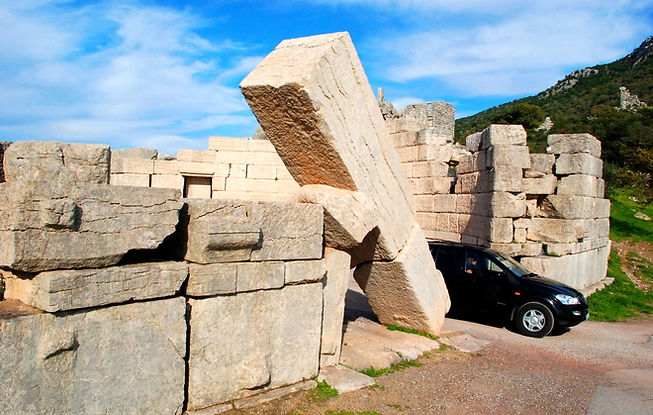
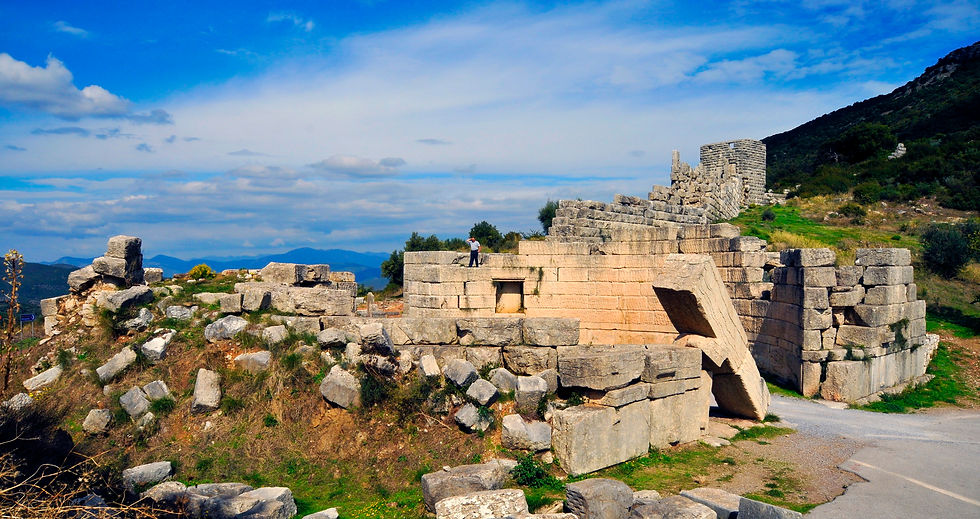

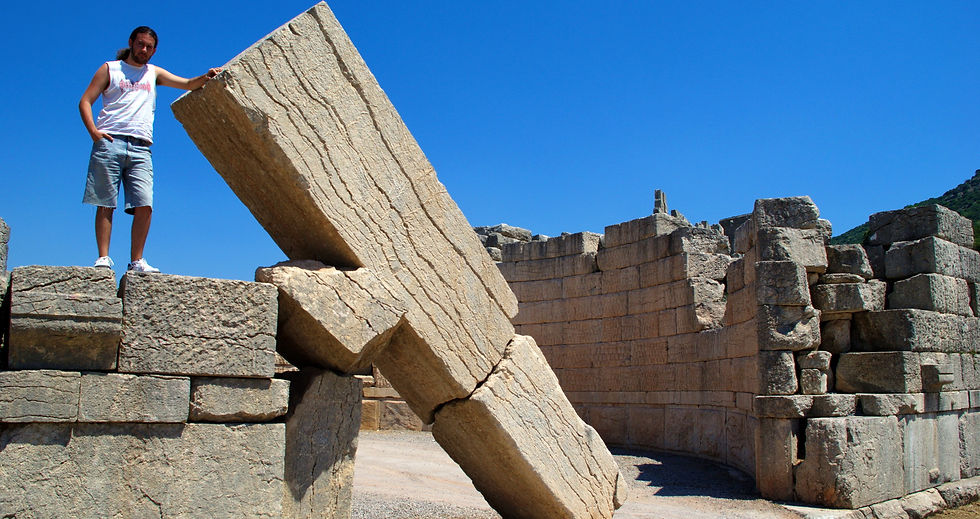

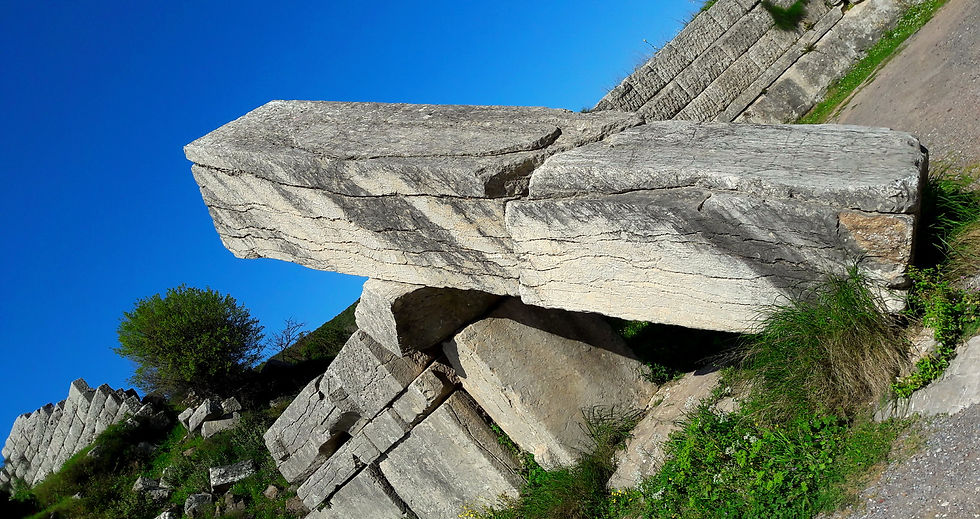

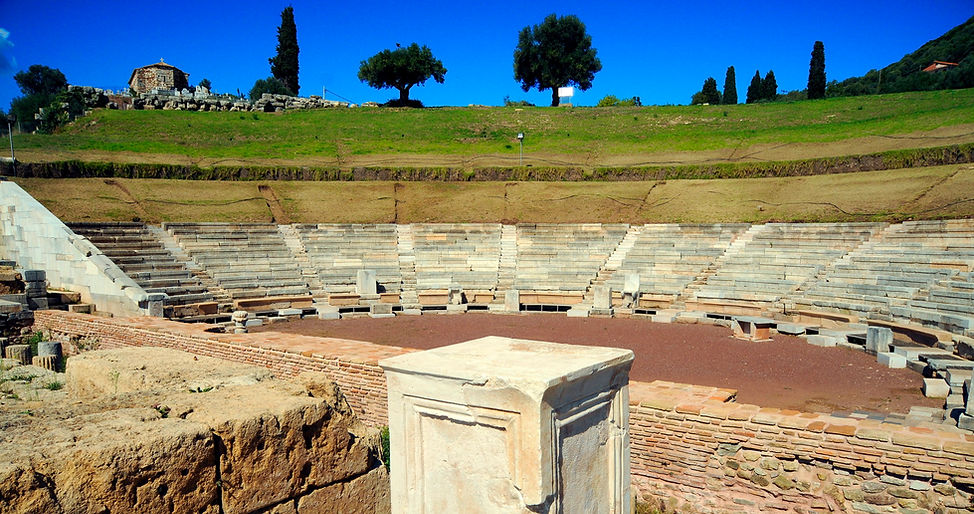

THE THEATRE The first monument one encounters on the way from the Museum to the archaeological site is the theater. The theater was used for large scale assemblies of political character. The caver of the theater sits on an artificial fill supported by a strong semicircular wall. The wall is interrupted at regular intervals by entrances with pitched arches which led via stairways to the upper corridor;
from there, other stairways provided access to the orchestra and also defined the wedge-shaped divisions of seats. The exterior of the retaining wall is built in exactly the same way as the fortification walls and towers of the city. The fort like impression is accentuated by the arched entrances and ascending stairways. These elements and the fact that the retaining wall of the cavea visible and accessible from the outside make the Theatre of Messene an exceptional building anticipating the theatres and amphitheatres of the Roman period.
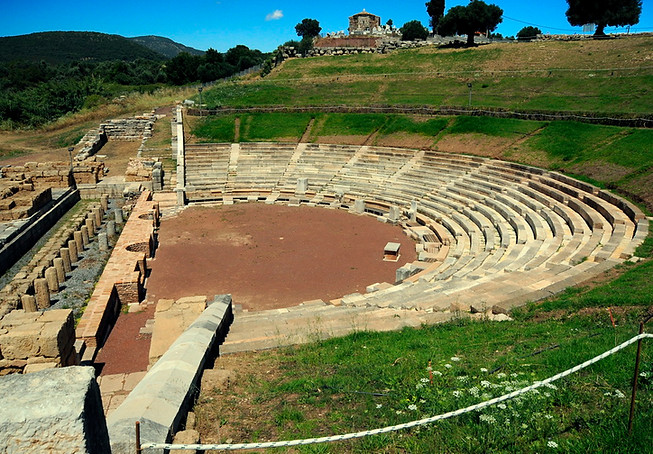
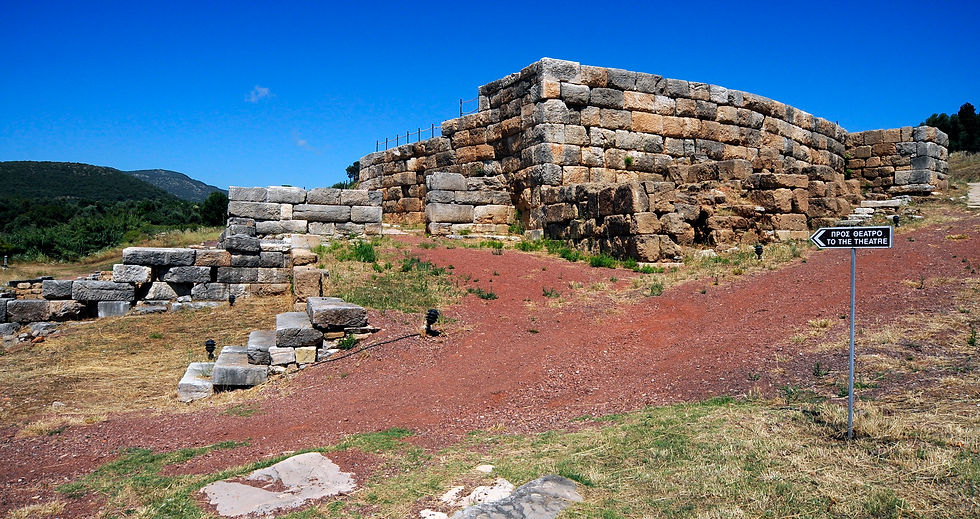
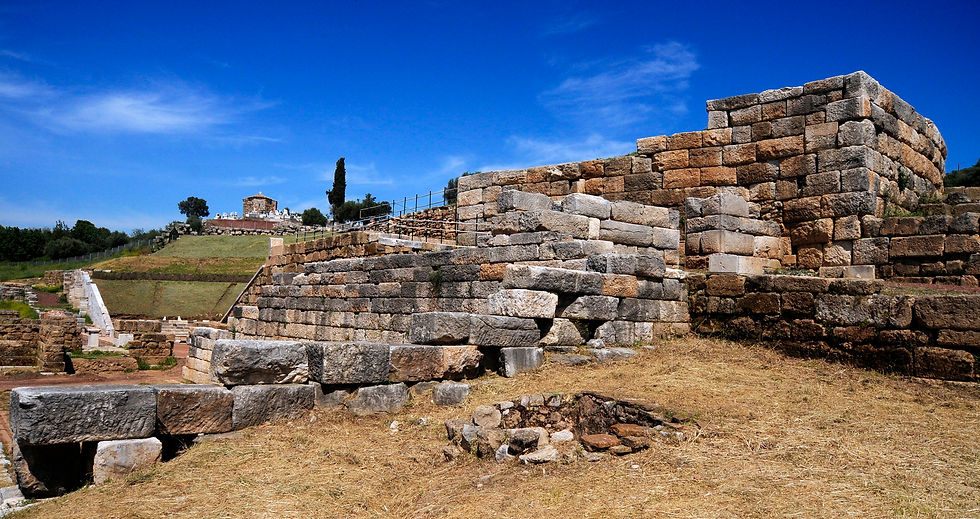
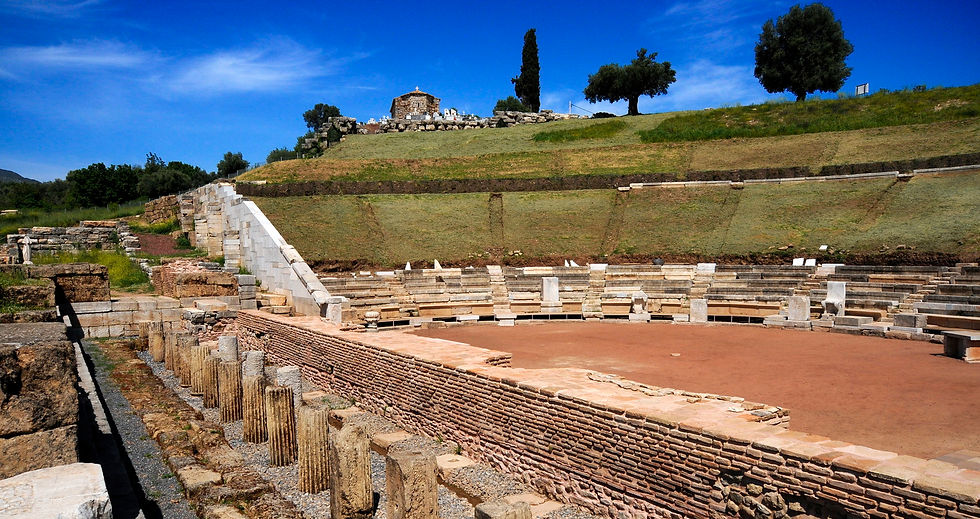
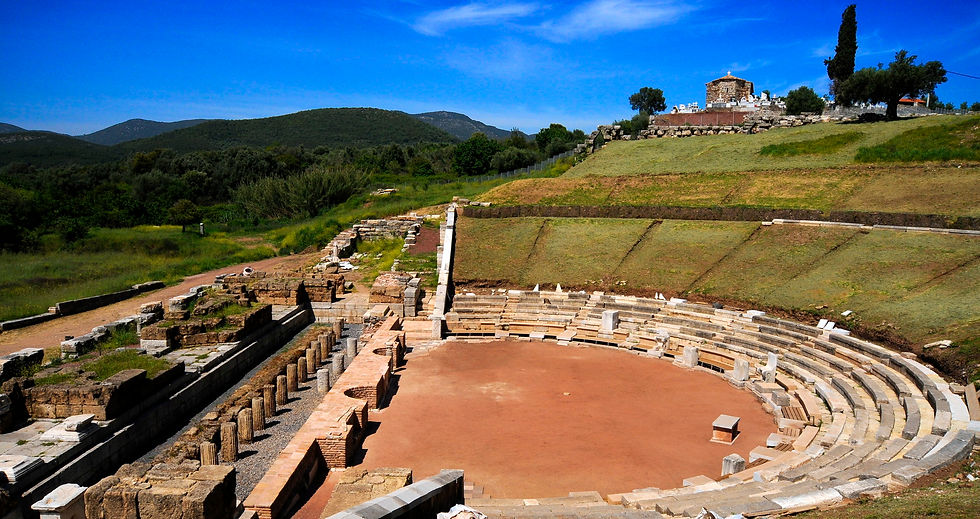

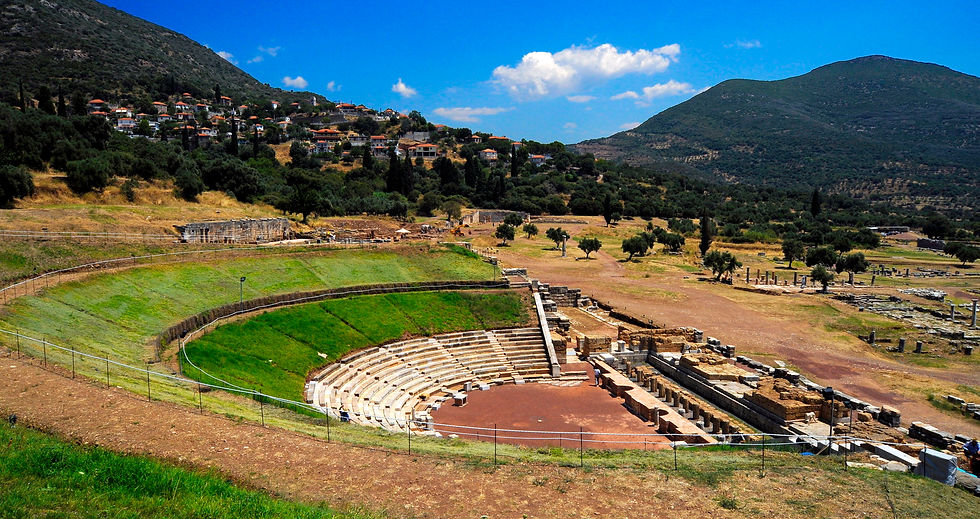
THE ARSINOE FOUNTAIN HOUSE
Traveller Pausanias (4.31.6) informs us that the fountain house of the Agora was named after Arsinoe, the daughter of Leukippos (the mythical king of Messenia) and mother of Asklepios. Pausanias also notes that Arsinoe fountain house received the water from the Klepsydra spring. Arsinoe fountain house includes a cistern of 40m. long, located at a short distance in front of the rear wall. Between the cistern and the rear wall was a facade with ionic half columns. A semicircular exedra situated exactly at the centre of the cistern supported a group of bronze statues. Two more cisterns are located at a slightly lower level and symmetrically on each side of a paved court. The facade of the fountain house during its first phase was screened by a doric colonnade which was removed during the monument's second phase in the 1st c. A.D.
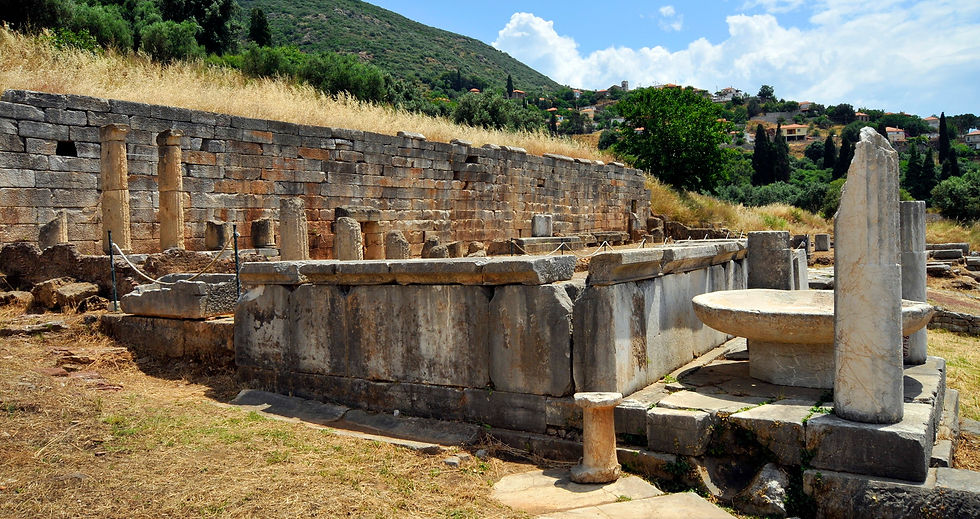
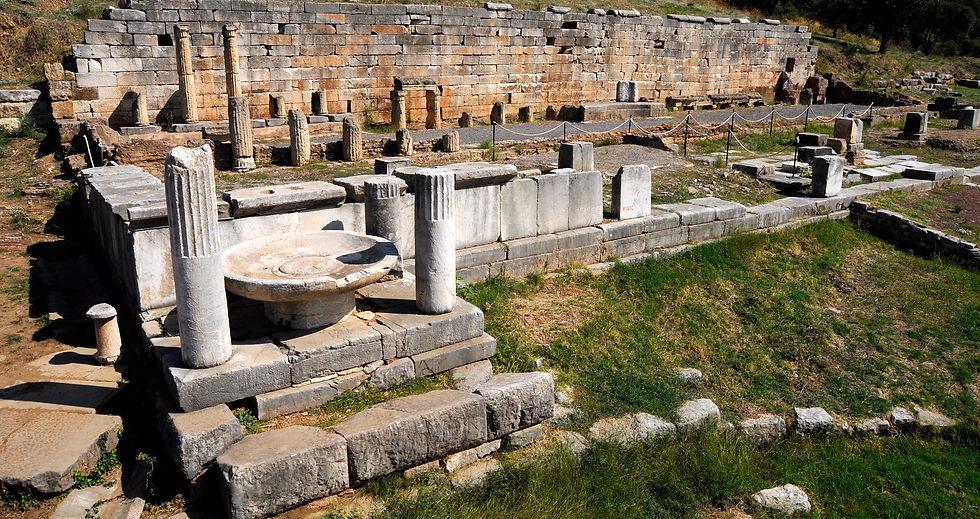

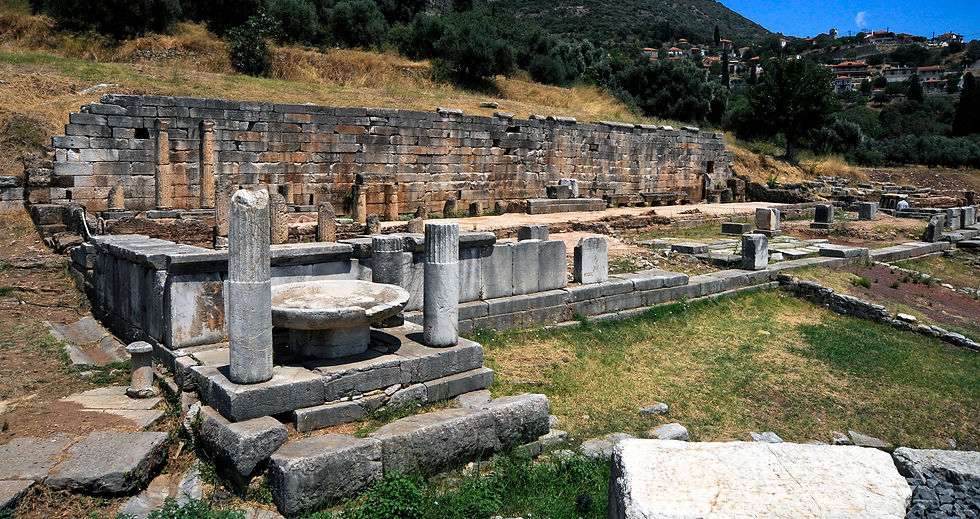
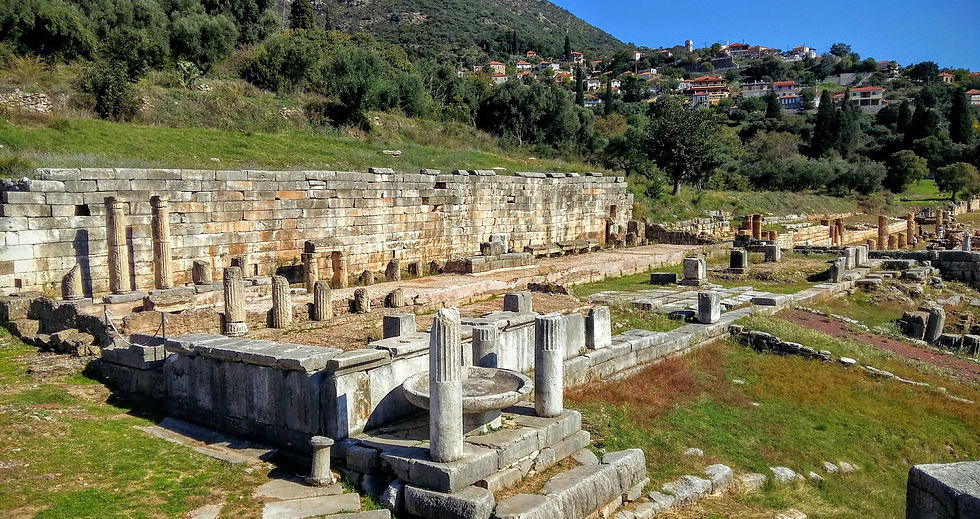
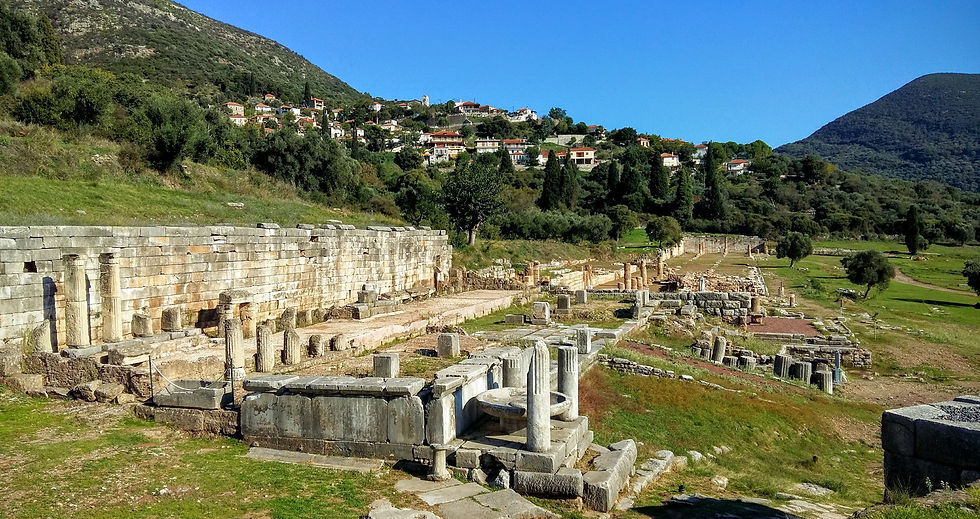

The Asclepieion
Pausanias represents the Asklepieion as a museum of art works, mainly statues, rather than the more usual sanatorium for sick patients. It was the most conspicuous site in Messene and the center of the public life of the city, functioning as such alongside the nearby Agora. The temple and altar are closely hedged about by about 140 bases for bronze statues, mainly of political figures, and five exedras, and many other statues were erected along the stoas. The Asklepieion consists of an almost square area measuring 71.91 x 66.67 m., with four internal stoas opening on to the central open-air courtyard. Each of the stoas on the north and south sides had 23 Corinthian columns on the facade, supporting an entablature that consisted of an Ionic architrave and a frieze with relief bull's heads adorned alternately with floral scrolls and bowls. There were similar stoas on the east and west sides, though these each had 21 columns. All the stoas had a second, inner colonnade with fourteen columns on the north and south sides and thirteen on the east and west.
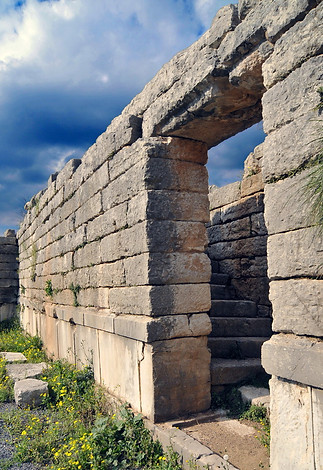
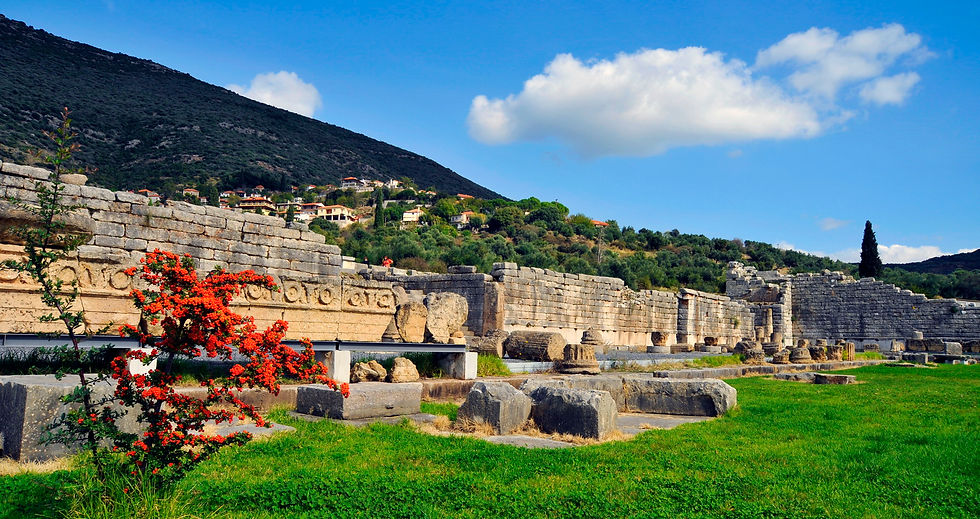

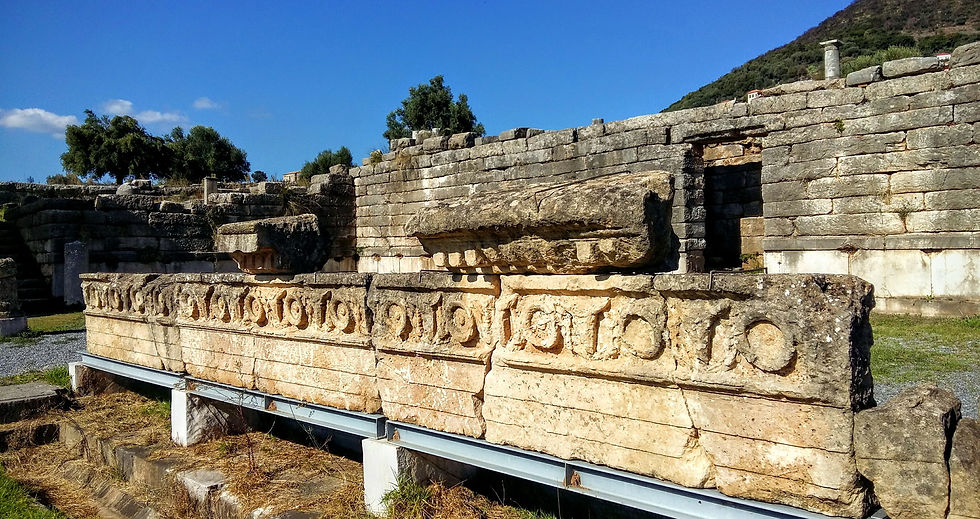
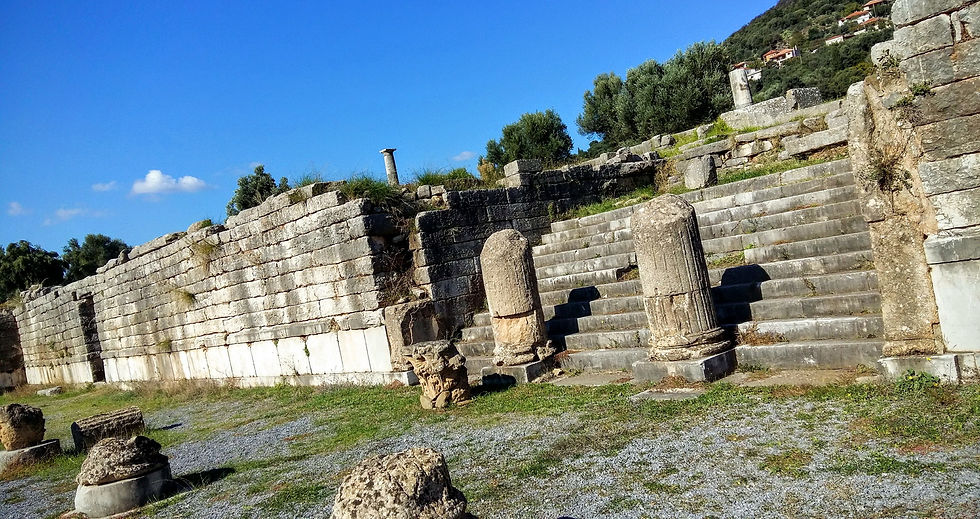
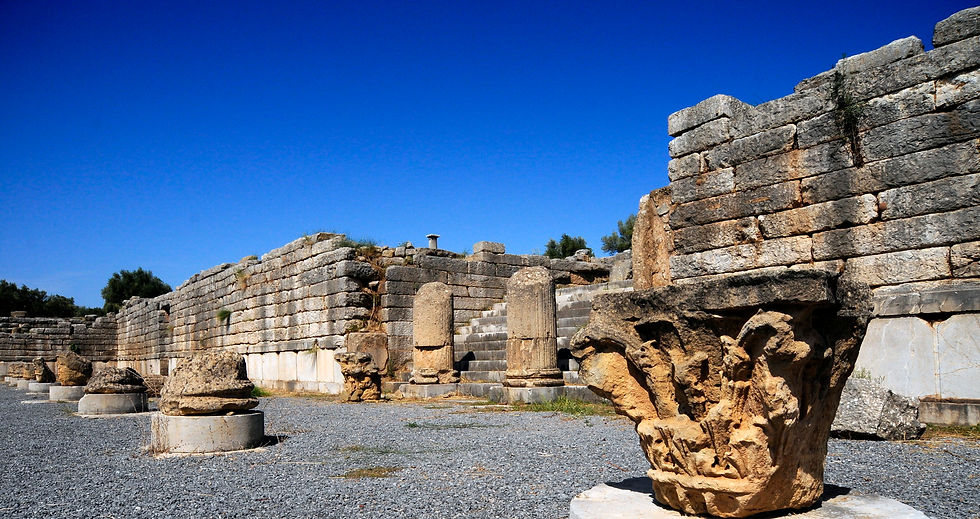
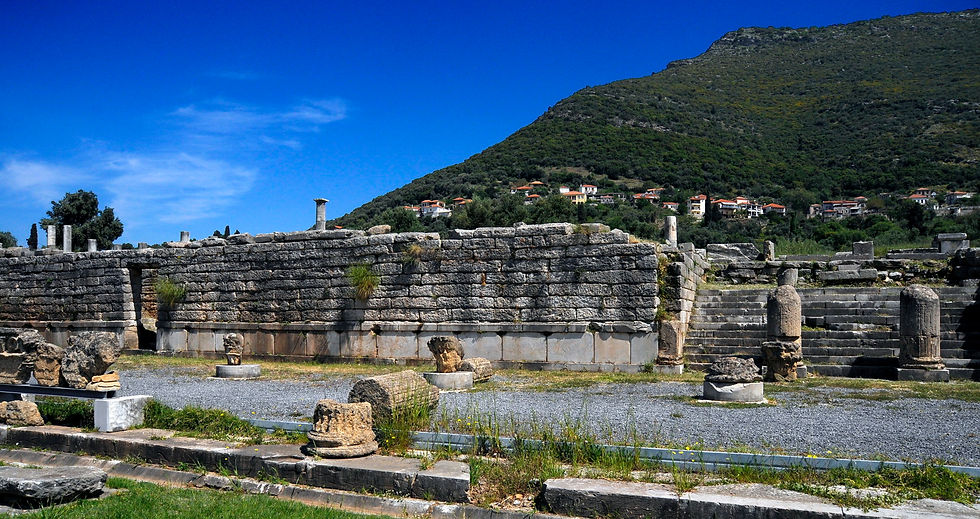
In the east wing of this peristyle courtyard is a complex of three buildings: the small, roofed, theater-like Ekklesiasterion , the imposing Propylon, and the Synedrion or Bouleuterion together with the hall of the Archive .
THE EKKLESIASTERION (ASSEMBLY HALL) It is a small theater-like construction with its cavea enclosed within a rectangular structure and with a semicircular orchestra. The scene (width: 21m.) possessed a proscenium with three openings in the front and an exit stairway at its eastern side.
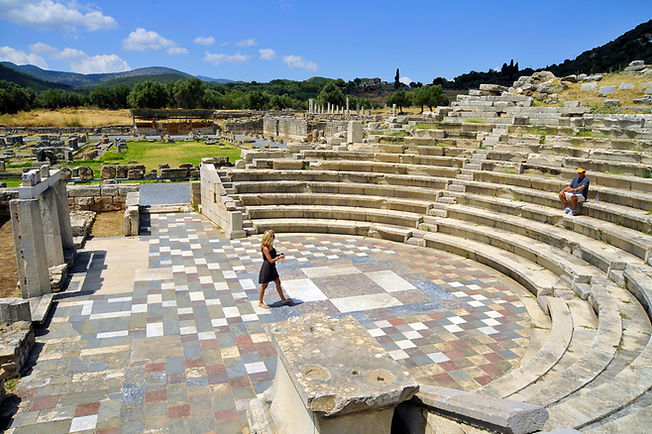
The cavea, slightly larger than a semicircle, is divided by means of a corridor into an upper and lower part. The better preserved lower part of the cavea comprises eleven rows of seats and is divided into three wedge-shaped divisions of seats by two stairways. Two more ascending stairways can be found at the two ends of the cavea near the parodoi. There are two entrances to the east, on the side of the adjacent ascending road, one leading to the orchestra via a descending stairway, and the other giving directly to the corridor between the upper and lower part of the cavea.
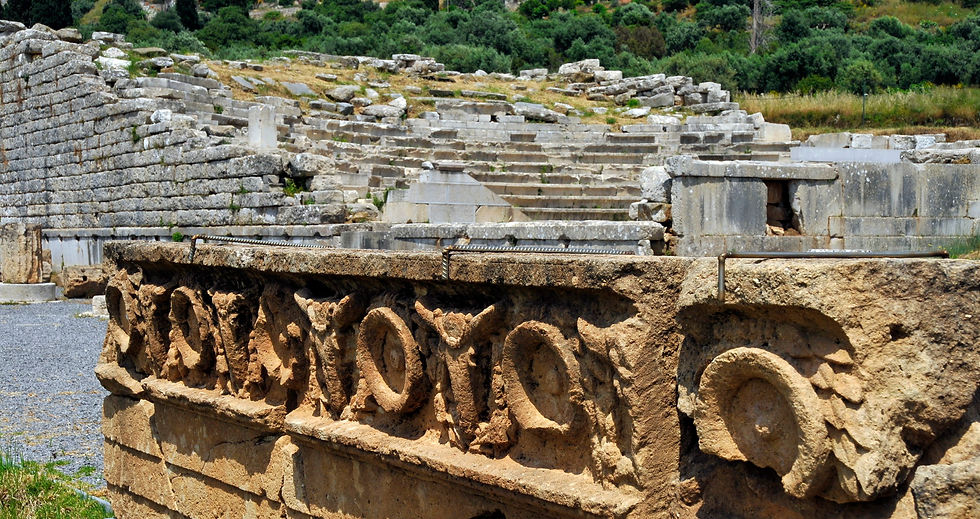
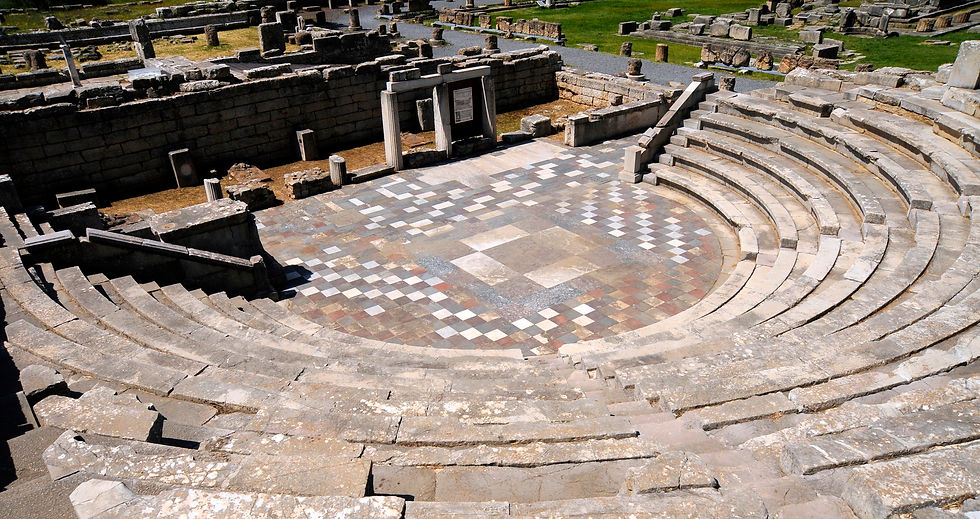
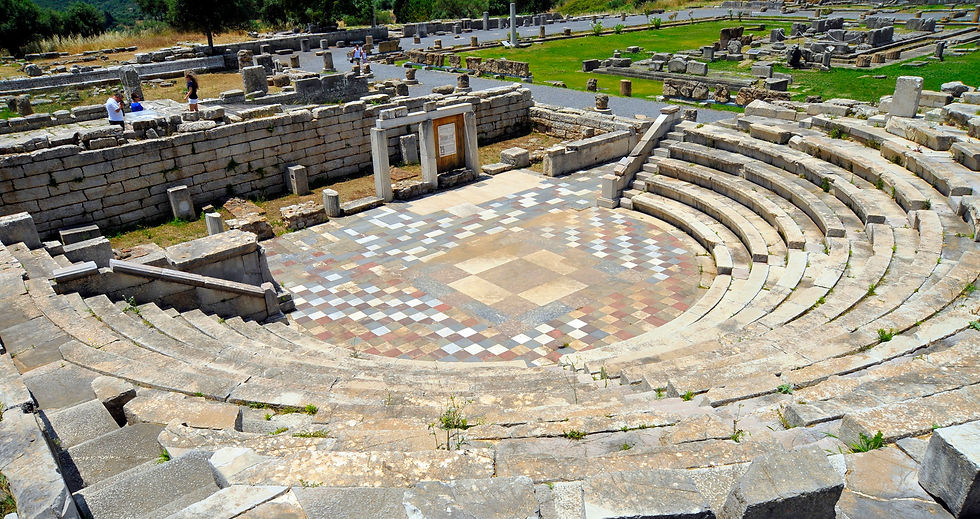

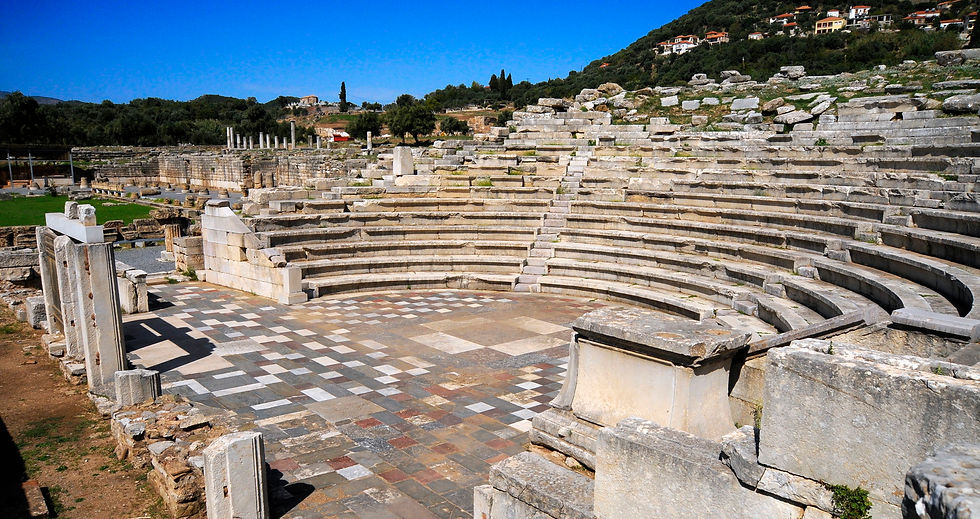

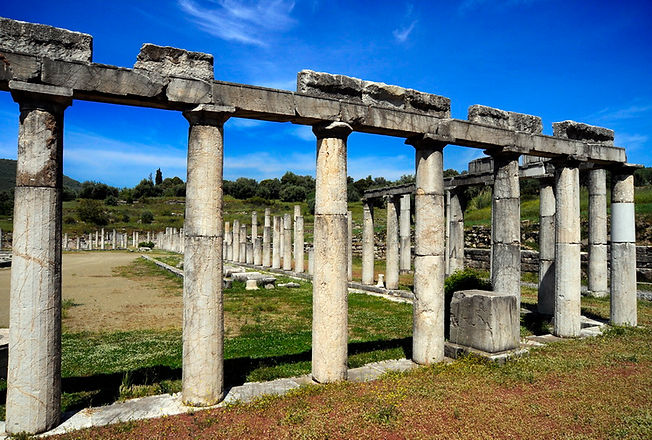
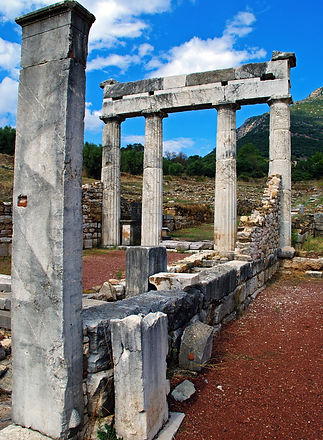
STADIUM AND GYMNASIUM
The Stadium and Gymnasium count among the most impressive and well preserved building complexes of the site The northern horse shoe-shaped end of the Stadium includes 18 wedge-shaped divisions of seats with 18 rows of seats divided by stairways. It is enclosed on its three sides by doric stoas with most of their columns standing in place. The northern colonnade is double, while the eastern and western ones are simple. The colonnades belong to the Gymnasium which together with the Stadium formed one single architectural unit. The western stoa/portico terminated at a distance of 110m. from its northern end. At this point a doric peristyle court is located which is identified as the palaistra. Bases with honorary inscriptions are located between the columns of the western stoa and used to bear statues of gymnasiarchs (Gymnasium officials). Also other inscriptions bearing lists of ephebes were found in the area.
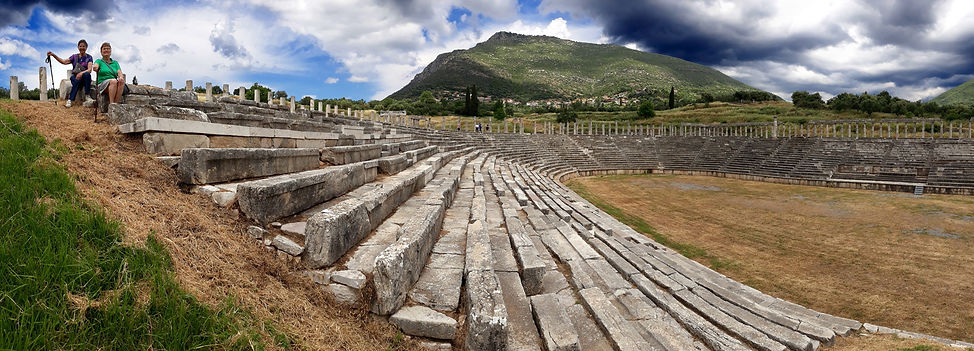

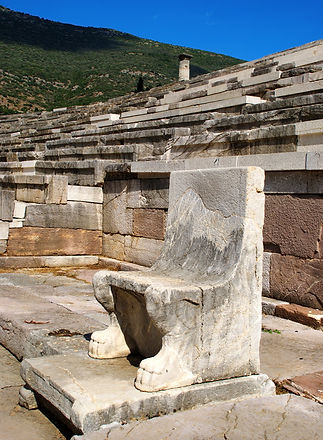
Behind the western colonnade was the sanctuary of Heracles and of Hermes with their cult statues
Behind the west stoa/portico of the Gymnasium a funerary monument came to light including eight cist graves in its interior axially arranged around a small cist. The numerous surviving members of its upper structure suggest that it had the form of a square-shaped chamber (approximately 4.80m. X 4.80m.) with a conical roof which bore on its top a column probably supporting an ex voto. On the geison around the chamber appear the names of the deceased, both of men and women honored with this impressive monument.
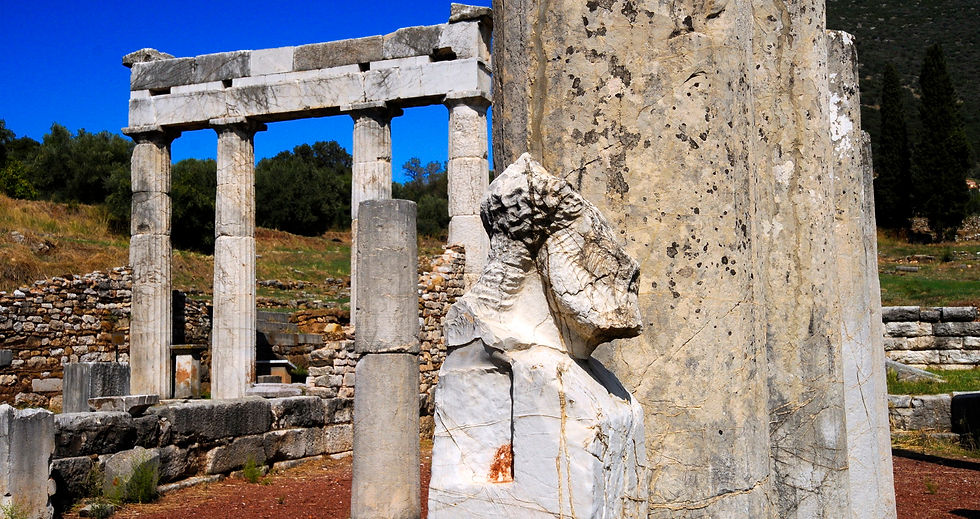
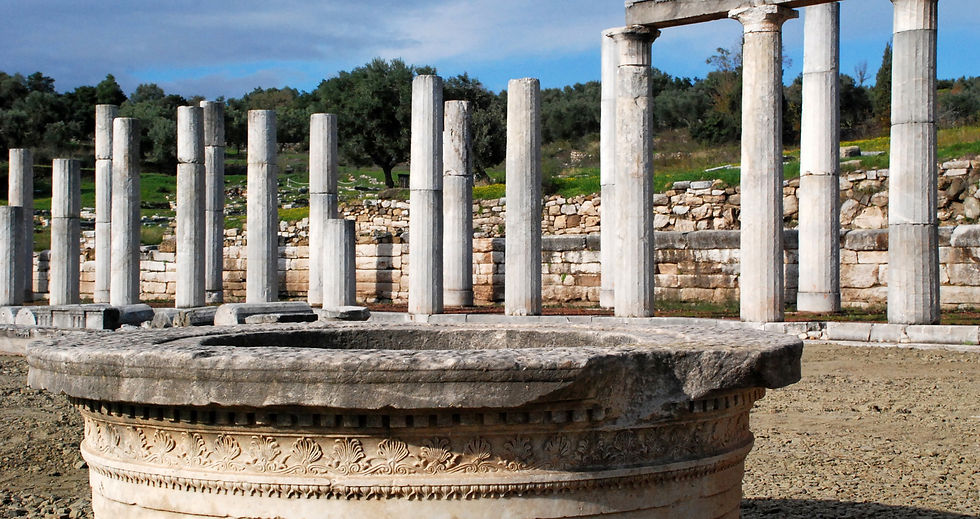
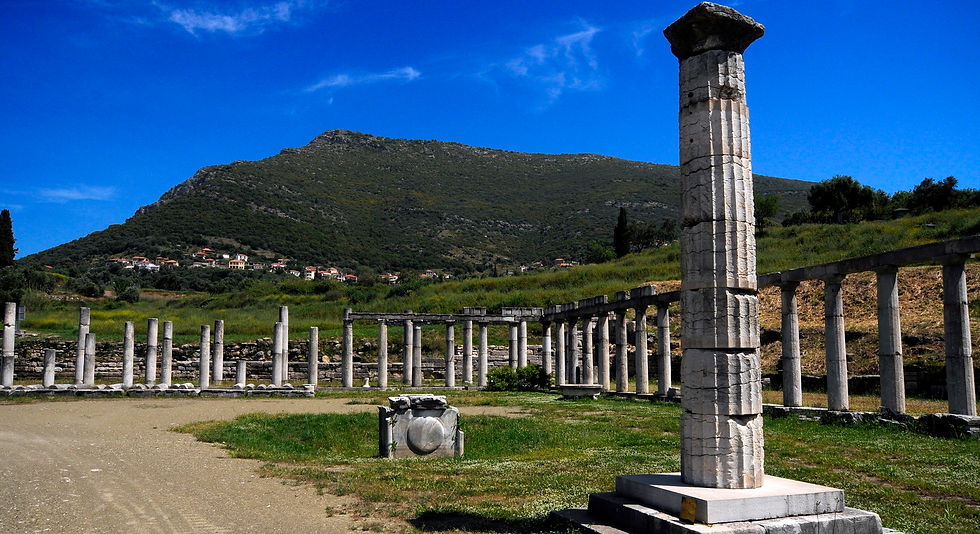
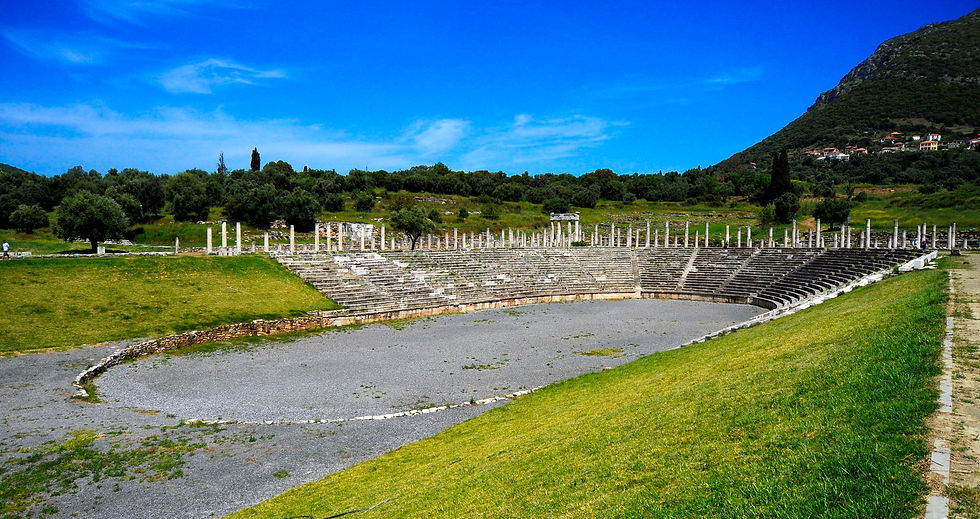

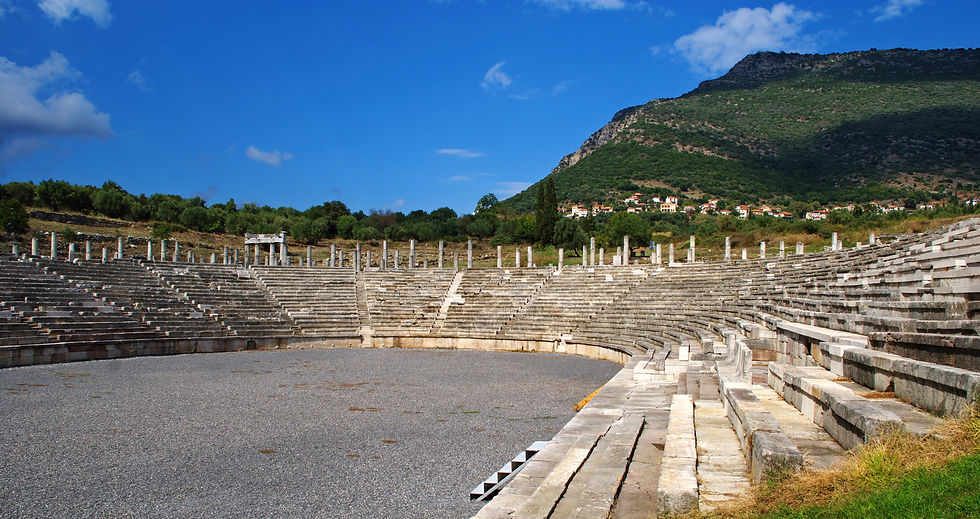
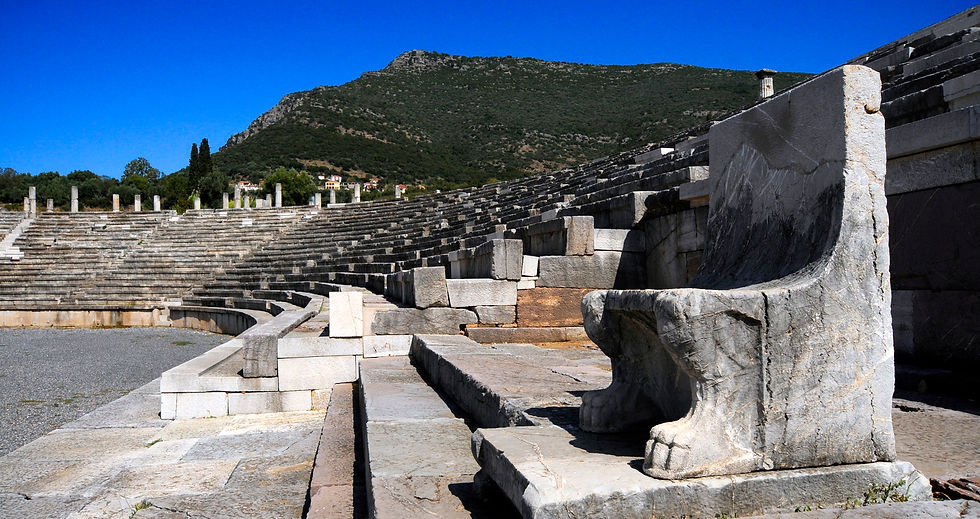
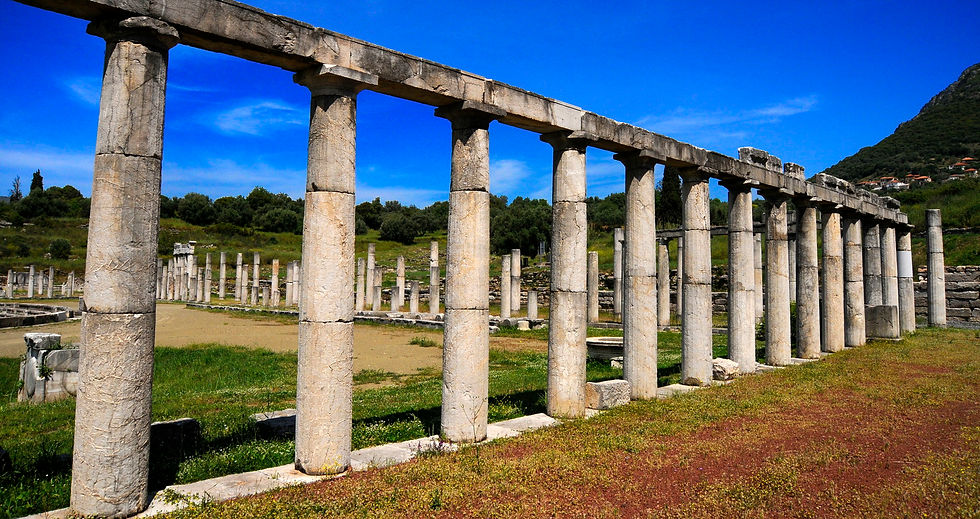
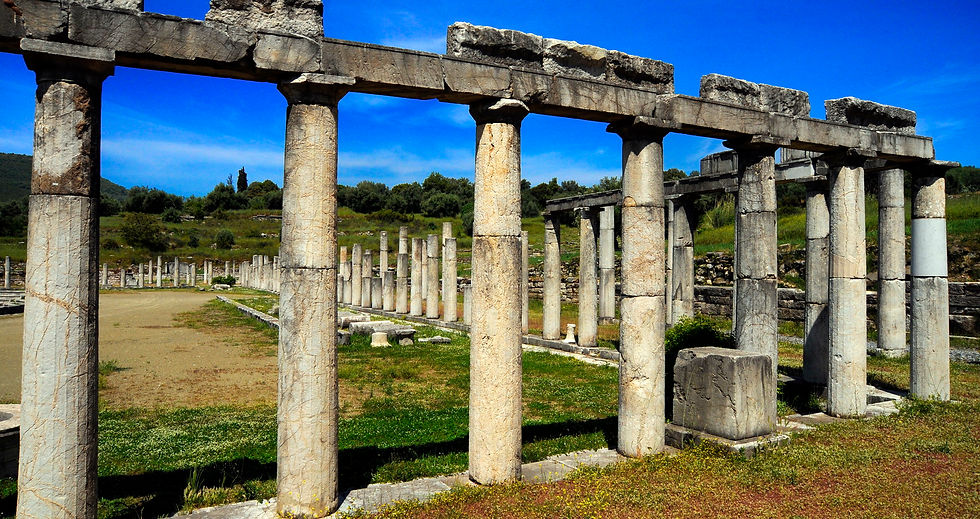
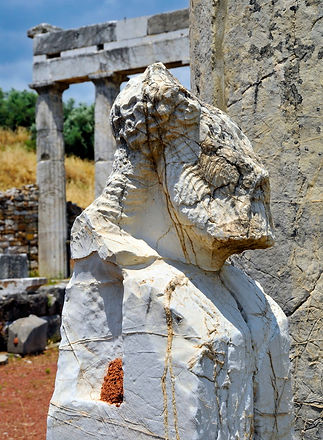
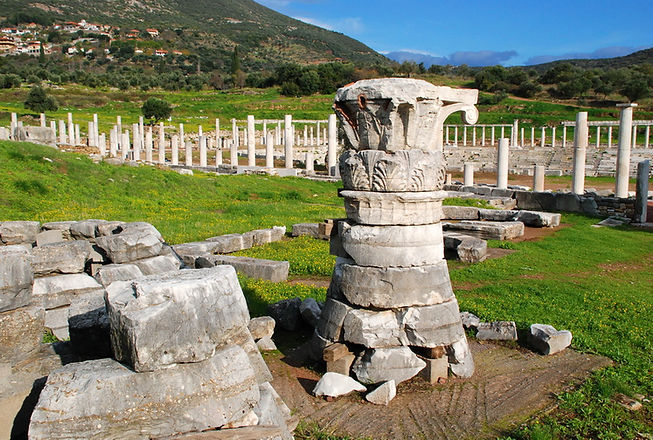
THE HEROON AT THE STADIUM
The Heroon is part of the Stadium, with which it is connected both architecturally and in terms of its function. The building is a Doric temple with four columns in front, made entirely of local limestone. It stands on the south side of the Stadium, just to the right of the axis of the race-course, on a rectangular podium that projects like a bastion from the city wall. The building in the form of a temple was a funerary monument, a kind of Heroon-Mausoleum.

It belongs to the tradition of similar monuments from Asia Minor, like the monument of the Nereids at Xanthos and the Mausoleum of Halikarnassos. Some of its features also relate it to the Heroon at Kalydon.
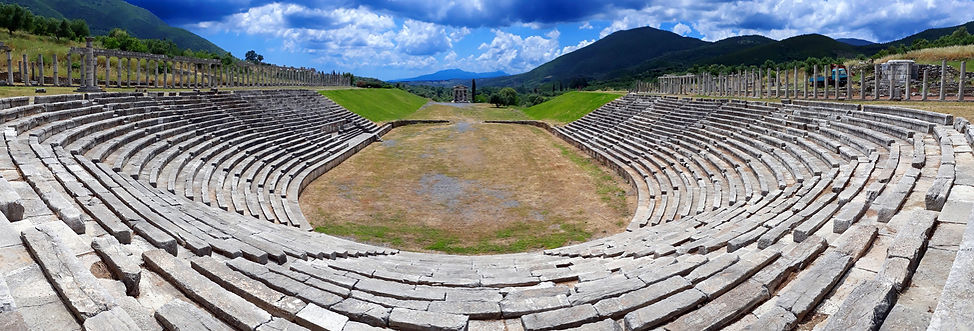
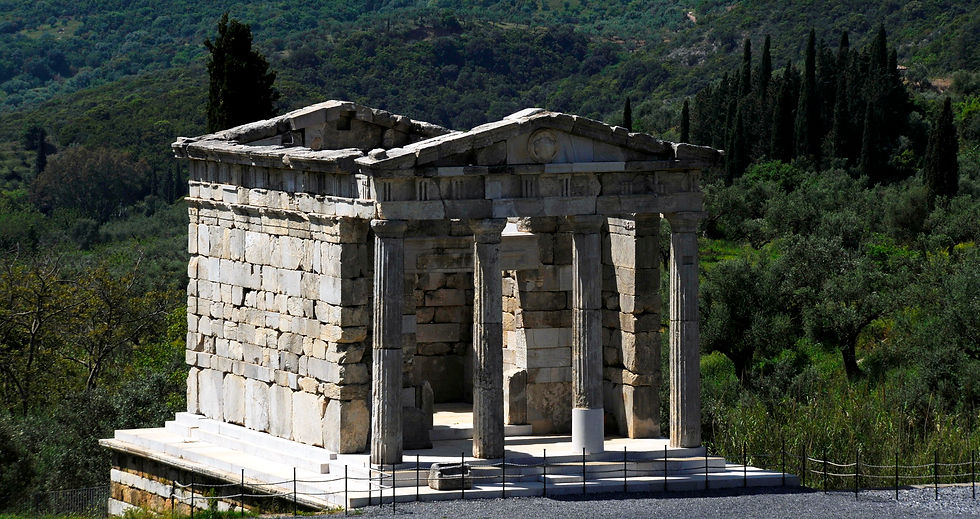
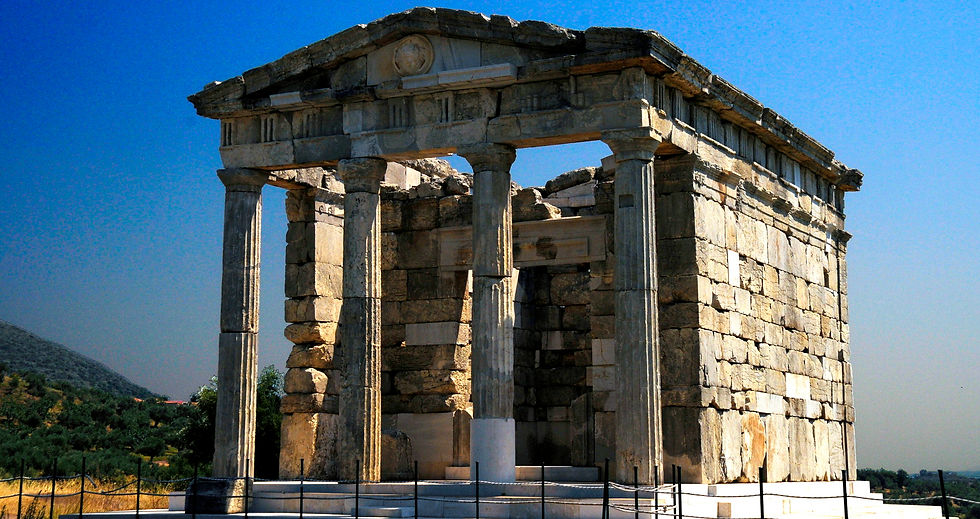
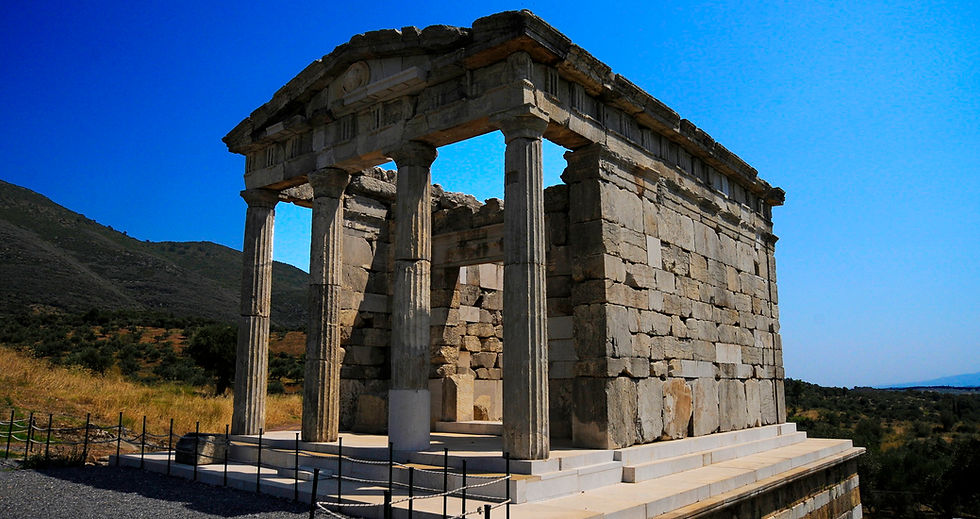
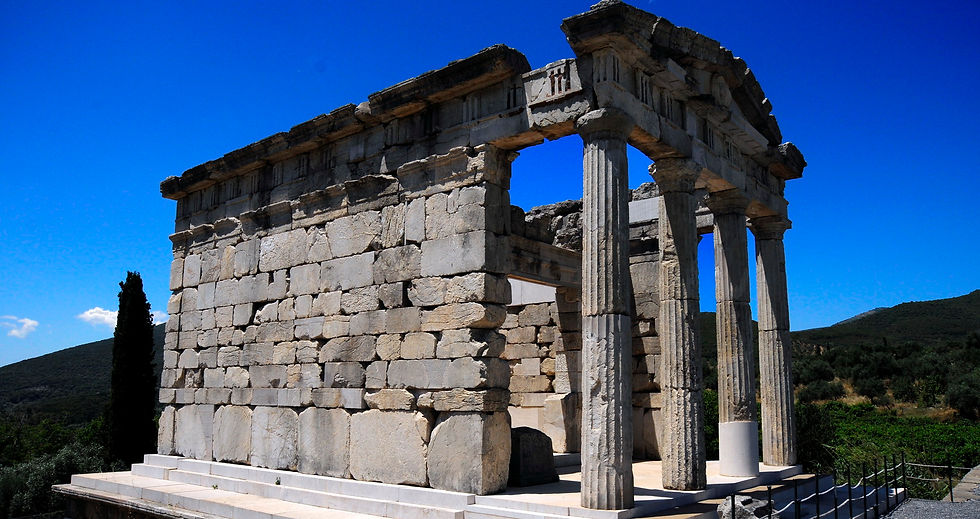
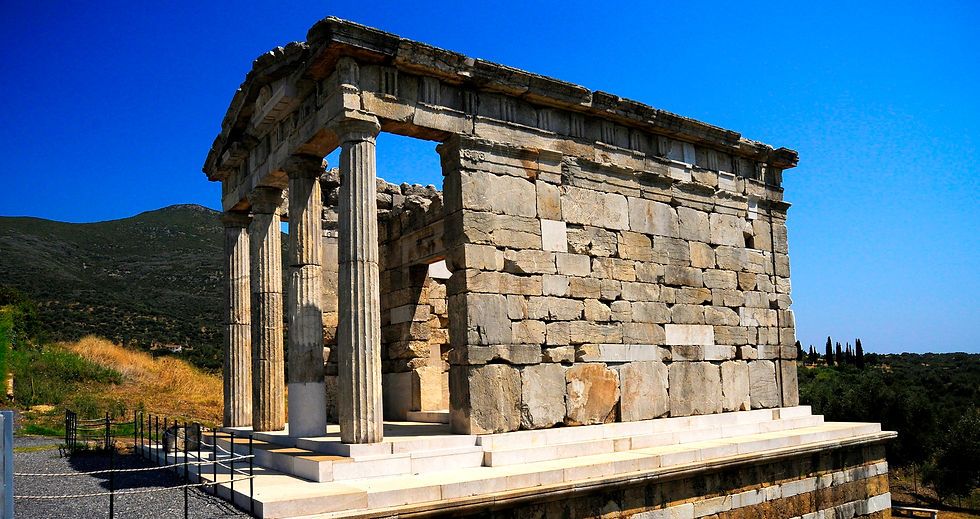
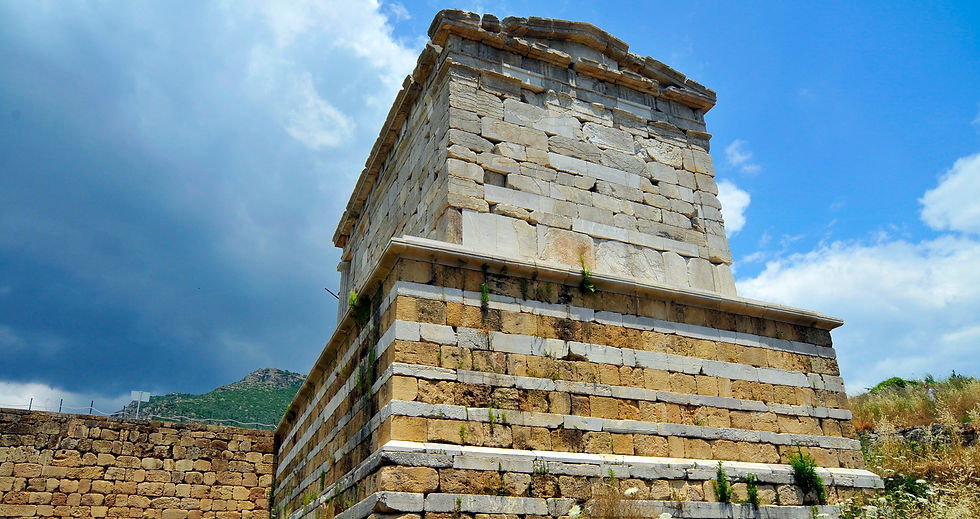
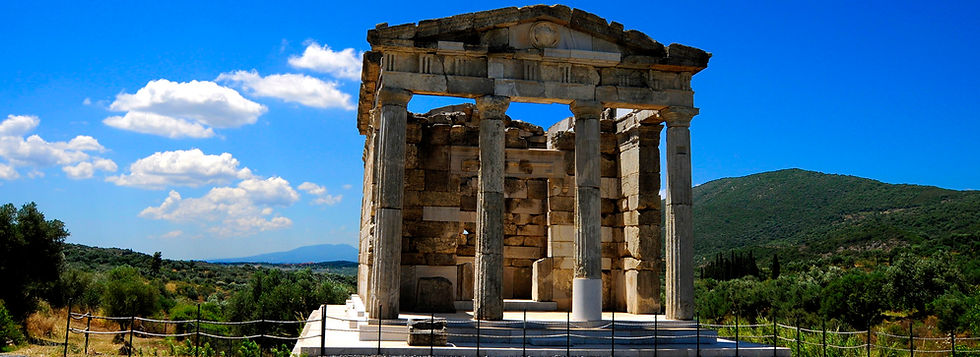
Ancient Messene
The city of Ancient Messene was founded in 369 BC by the Theban general Epaminondas (after the Battle of Leuctra in 371 BC, which resulted in Spartan defeat and the establishment of the Theban Hegemony). It became the capital of the free Messenian state following a long period (about four centuries) of occupation of the Messenian territory by the Spartans. The city has the rare advantage of not having been destroyed or covered by later settlements and of being situated in an untouched Mediterranean natural environment par excellence. This landscape combines the mountainous majesty of Delphi and the lowland riverine tranquillity of Olympia, with the looming bare limestone mass of Mt Ithome and its acropolis, and the low, fertile valley around the ancient city.
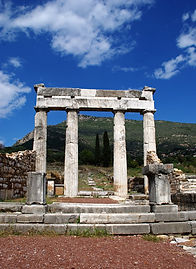
Mausoleum
According to the testimony of Pausanias (4.32.2), one personality of great wealth and influence to whom the Messenians accorded the honours appropriate to a hero, was the Messenian life high priest and helladarches Saithidas. The Heroon-Mausoleum in the Stadium belonged most likely to the family of the Saithidai. Distinguished members of this family were buried in it and received a hero's honours from the date of the foundation of the Heroon in the 1st century BC, at least down to the time of Pausanias's visit to Messene (AD 155-160).


